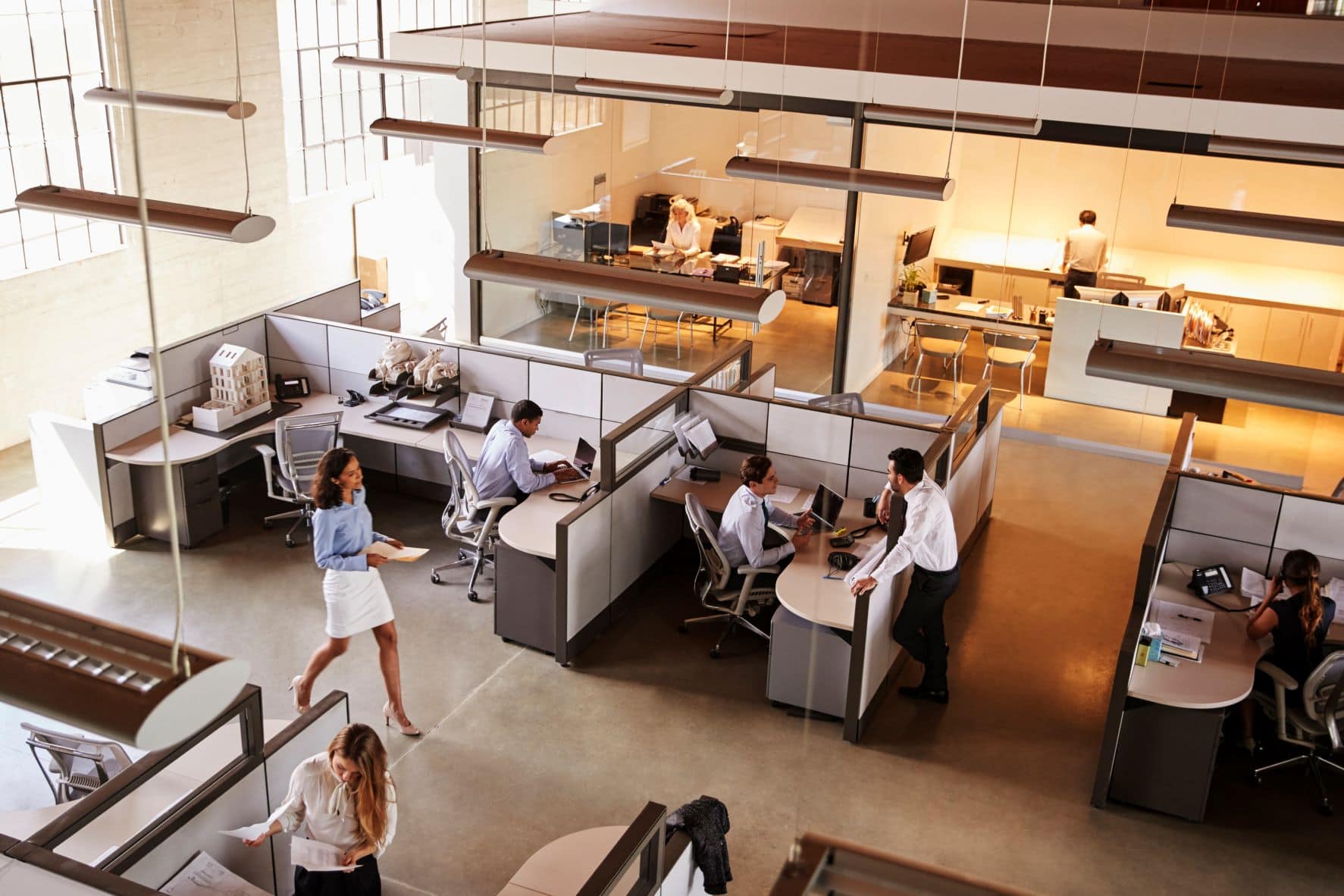You want to ensure every detail in your office will help create and support the best environment for a comfortable and productive workspace from the flooring to office furniture, design layout, and lighting.
One of the biggest complaints leveled by employees and guests in the office is actually in regard to lighting, which is often overlooked as an essential component in designing or improving the workplace.
Whether you are a general contractor, office manager, or owner, planning the right lighting is an essential aspect of creating the ideal office environment. There are many different types of lighting to pick from, and it can feel overwhelming. Understanding the effects of lighting in the workplace will help you understand what you’re looking for and find the right designer for your space.
What Are the Effects Of Lighting?
Our body takes its cues from the sun, and spending much of our time indoors can affect our circadian rhythm and even result in sleep issues. Good lighting is vital to creating a stimulating and productive work environment to support a healthy, happy, and productive space for employees day-in and day-out.
Positive Effects Of Improved Lighting
A more natural approach to lighting provides an environment that positively impacts the workspace and benefits employees.
Improved lighting:
- Improves visual acuity
- Affects behavior, mood, hormonal balance and creates a happier workplace
- Promotes healthier employees, less absenteeism, and encourages productivity
- Gives employees have a better sense of comfort in the office, and the quality of their work will reflect this change
- Helps triggers the release of endorphins and serves to help combat depression
- Helps people experience better sleep at night, leading to feeling more rested during the day and, therefore, more productive
Adverse Effects Of Poor Lighting
Artificial or harsh lighting can negatively impact people in many ways. This type of lighting can include lamps, overhead light fixtures, etc., which are too bright at night and too dim during the day, or use harsh fluorescent lighting that overproduces blue light. This type of lighting also confuses our circadian rhythm and negatively impacts our bodies’ ability to discern the time of day.
Poor lighting in the workplace can have many negative effects:
- Headaches and migraines are common when lighting is too dim or too bright
- Inadequate lighting contributes to lethargy and lower productivity
- Dim lighting creates eye strain because the eyes have to work much harder to see
- Circadian rhythm is affected, causing inadequate or lack of sleep
- Symptoms of drowsiness, fatigue and lack of focus negatively impact productivity and motivation
- Studies have shown that insufficient lighting contributes to depression and Vitamin D deficiency which can also result in seasonal affective disorder (SAD)
What Are The 3 Basic Types Of Lighting?
Ambient Lighting:
Ambient lighting is generally used in conference rooms, hallways, and reception areas to illuminate an entire room or space better. Natural light is best when possible, as fluorescent lighting can have adverse effects on health and productivity. Incandescent lighting is often a better choice.
Focal Or Accent Lighting
Focal or accent lighting illuminates something you want to focus on, something specific such as an architectural feature or displayed items in recessed niche, so that the details can be seen clearly.
Task Lighting
This type of lighting will illuminate specific locations, such as a dedicated work area, office desk, or reading space and areas with a lack of natural light. This lighting is typically more directed and brighter than ambient lighting, and serves to benefit the task carried out in that specific area.
What Are The 3 Basic Tones of Lighting?
Cool Tones
Cooler or blue tones (5500k or greater) are suitable for areas to help people feel invigorated. However, these should mainly be used in places where people will spend shorter amounts of time, like a company brainstorming room, bathrooms, and kitchens.
Warm Tones
Warmer tones (2700k – 3000k) are great for areas where you want to create a calm and relaxed feeling, perhaps in a meeting room or smaller setting.
Middle Tones
Middle tones (5500k – 6500k) mimic natural light most closely, and create an inviting and friendly environment, with enough cool tones to keep people alert and motivated. Middle tones are great for larger spaces, and can be used liberally in any office setting.
Let Us Help You With Your Lighting Needs
As you can see, there are many factors to consider when choosing the best lighting for your office space and workplace.
Because lighting affects employee productivity and mood, T2B Commercial Interiors can help you make the most of natural light. Furthermore, properly designed window treatments can make a significant difference in energy usage. Whether you need something as complex as motorized blinds that connect to automated systems for optimal light and temperature control throughout the day, or something as simple as shades or customized drapes, T2B can help find the best solution for your space. We have relationships with the most respected manufacturers in the business, including MechoShade, Springs Window Fashions, Draper and WT Shade.
Contact us today to talk about your vision and needs for your office space or workplace.

